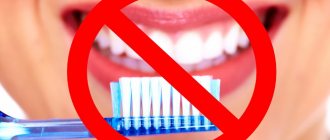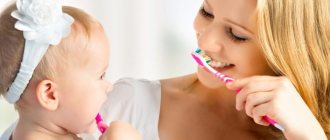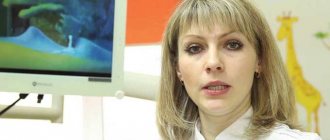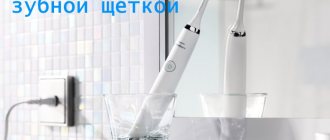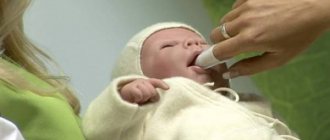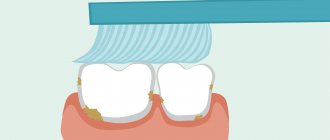Currently, medicine has come so far that diagnostic methods have become more accurate, and a variety of methods allows us to achieve an accurate diagnosis, and, therefore, the treatment prescribed by a doctor will be more effective. The medical center has its own clinical laboratory, which uses the most modern diagnostic methods. In particular, it is possible to use several methods to diagnose the presence of viruses in the human body. For example, a saliva test for viruses is the most informative and accurate.
Why is saliva taken for analysis?
Saliva is a biological fluid with important functions:
- ensuring food chewing;
- formation of a food bolus;
- swallowing function;
- oral cavity protection;
- Salivation is a process that produces lubricant.
It is a colorless liquid with a neutral alkaline reaction, which contains the following substances:
- antimicrobial components (lysozyme, secretory immunoglobulin A);
- digestive enzymes (ptialin, lingual lipase);
- epidermal growth factor;
- chloride, potassium, sodium and other electrolytes;
- amino acids, glucose, lactic acid, vitamins K, C, B1, H.
That is, the composition of saliva completely reflects the structure of blood plasma.
A real cocktail
The fluid that is secreted by the salivary glands is a whole cocktail of proteins, vitamins, micro- and macroelements, although most of it, 98–99%, is water.
The concentration of iodine, calcium, potassium, strontium in saliva is many times higher than in the blood. Microelements are also present in the salivary fluid: iron, copper, manganese, nickel, lithium, aluminum, sodium, calcium, manganese, zinc, potassium, chromium, silver, bismuth, lead. Article on the topic Protect the liver. Hepatitis C can be detected by saliva testing
Such a rich composition ensures the proper functioning of salivary enzymes, which begin digesting food in the mouth. One of the enzymes, lysozyme, has a significant bactericidal effect - and it is isolated for the preparation of certain drugs.
Sputum culture for microflora and sensitivity to antibiotics
For bacteriological examination, sputum is collected before the start of antibacterial therapy or after a certain period of time after administration of the drug.
Collection procedure
- Sputum is collected in the morning, on an empty stomach. Before collecting sputum, brush your teeth and rinse your mouth with water to remove food particles and bacterial plaque. Take two deep breaths, holding your breath for a few seconds, and after each deep breath exhale slowly. Then inhale a third time and forcefully exhale (push) the air out. Inhale again and clear your throat well.
- Hold the container as close to your mouth as possible and carefully spit the mucus into it after coughing. Be careful not to get any sputum on the edge of the container. Do not touch the inside of the lid or the sides of the sterile container with your fingers. Close the container tightly with the lid.
- Wash your hands with soap.
- Deliver the morning sputum collected for examination to the laboratory. In this case, conditions must be created to prevent its cooling during transportation. Otherwise, changes in sputum qualities and the composition of microbial colonies will quickly occur, which may distort the results of the study.
Attention! You should not collect sputum released during expectoration, only when coughing. Saliva entering the sample can significantly affect the test result.
Indications for saliva testing for free hormones
- With age-related changes in hormonal status.
- Presence of symptoms of premenstrual syndrome in women.
- Changes in hormonal levels in pre- and postmenopausal states for the correct prescription of replacement therapy drugs.
- If necessary, control after completion of hormone replacement therapy.
- Persons of both sexes with symptoms of hormonal imbalance.
In addition, potential users may be people with the following symptoms: chronic fatigue, insomnia, decreased immunity, obesity/overweight, high blood sugar, sexual dysfunction, getting up at night to go to the toilet.
Before taking the test, it is not recommended to eat or drink drinks for an hour. For 10 minutes, rinse your mouth with clean water. You should refrain from taking hormonal medications for 48 hours before taking the test. To assess the effectiveness of therapy, drugs should not be discontinued.
Ways to Reduce Oral Germs
- Carry out oral hygiene procedures regularly and thoroughly.
- If necessary, the patient is prescribed a medication that can increase or decrease acidity levels. In addition, with the help of certain medications, the natural microflora of the oral cavity is restored. The drug helps eliminate harmful bacteria, which have the property of rapidly multiplying and spreading to vital organs and systems of the human body.
- Normalize nutrition. Acidity in the mouth can change if there are insufficient amounts of vitamins and minerals in the body.
To prevent the development of dental disease, it is necessary to regularly monitor the condition of the entire oral cavity.
Expert of the article you are reading:
Analysis of urine
A urine test establishes drug use within 3-7 days of use. The collection of biomaterial is carried out in a dry and clean container in a volume of 50-100 ml. Urine drug testing is carried out using two methods: immunochromatographic and chemical-toxicological.
Immunochromatographic analysis. This is an express method for testing for the presence of narcotic substances in urine, which is carried out immediately after collecting biomaterial. You can get the result in 10-15 minutes. However, keep in mind that it allows you to identify only 14 types of drugs:
- morphine,
- methadone,
- benzodiazepines,
- marijuana,
- heroin,
- phencyclidine,
- amphetamine,
- barbiturates,
- propoxyphene,
- cocaine,
- oxycodone,
- ecstasy,
- ketamine,
- buprenorphine.
Chemical-toxicological analysis. Its main advantage is versatility. This research method detects all known psychotropic substances and drugs in urine. However, the study takes up to 3-4 days.
Urine drug testing is the most common test because it is simple and provides quick results.
Sputum. General clinic
- Sputum is collected in the morning, on an empty stomach. Before collecting sputum, brush your teeth and rinse your mouth with water to remove food particles and bacterial plaque. Take two deep breaths, holding your breath for a few seconds, and after each deep breath exhale slowly. Then inhale a third time and forcefully exhale (push) the air out. Inhale again and clear your throat well.
- Hold the container as close to your mouth as possible and carefully spit the mucus into it after coughing. Be careful not to get any sputum on the edge of the container. Do not touch the inside of the lid or the sides of the sterile container with your fingers. Close the container tightly with the lid.
- Wash your hands with soap.
- Deliver the morning sputum collected for research to the laboratory no later than 1–1.5 hours after collection. In this case, conditions must be created to prevent its cooling during transportation. Otherwise, changes in sputum qualities and the composition of microbial colonies will quickly occur, which may distort the results of the study.
Attention! Do not collect sputum released during expectoration. Saliva entering the sample can significantly affect the test result.
What can you find out during the examination?
The highest accuracy of DNA tests allows their results to be used not only for scientific work, but also to establish the truth in controversial issues:
- the study reveals all genetic pathologies and susceptibility to certain diseases, such as diabetes, hepatitis;
- Genetic analysis of saliva establishes relationship with more than 99% accuracy. DNA testing determines both paternity and maternity;
- This is how a close relationship is established when the surnames coincide, for example;
- nationality analysis allows you to determine ethnic group and genealogical origin. It is known that representatives of different nationalities are susceptible to certain diseases to varying degrees. The test result allows you to adjust your lifestyle in order to avoid them;
- in this way, the patient’s addiction to drugs or alcohol is diagnosed, and intolerance to certain medications and products is determined;
- Most often, genetic analysis of saliva is used for personal identification. In forensic science, DNA testing began to be used immediately after the discovery of Dr. Alec Jeffries. The study of any biomaterial from a crime scene - blood stains, skin particles on upholstery, saliva on a cigarette filter - allows you to accurately determine whether a particular person was at the crime scene.
DNA profiling, although not a full-fledged study of the genome, provides a huge amount of information. Using the test results, individual diets are drawn up, rehabilitation methods and treatment regimens are developed, and the cause of infertility is determined.
How to donate saliva
The sample can be submitted to the laboratory. Using a cotton-tipped swab, scrape the inside of the cheek to collect epithelial cells. The smear is dried at room temperature, sealed and transferred to the research laboratory.
How to collect samples yourself at home? To do this, purchase sterile cotton swabs and a sealed plastic bag. Wash your hands thoroughly, rub the stick along the inside of your cheek, then carefully, being careful not to take the sample with your bare hands, pack it in a bag. The sample can be sent by mail.
The procedure is somewhat different in cases where a sample needs to be obtained if the subject disagrees. The most common materials are cigarette butts and chewing gum with traces of teeth and saliva. The minimum amount of biomaterial on them is sufficient for DNA analysis to establish paternity. Samples must be bagged and sent to the laboratory.
Sputum. Tuberculosis
- Sputum is collected in the morning, on an empty stomach. Before collecting sputum, brush your teeth and rinse your mouth with water to remove food particles and bacterial plaque. Take two deep breaths, holding your breath for a few seconds, and after each deep breath exhale slowly. Then inhale a third time and forcefully exhale (push) the air out. Inhale again and clear your throat well.
- Hold the container as close to your mouth as possible and carefully spit the mucus into it after coughing. Be careful not to get any sputum on the edge of the container. Do not touch the inside of the lid or the sides of the sterile container with your fingers. Close the container tightly with the lid.
- Wash your hands with soap.
- Deliver the morning sputum collected for research to the laboratory no later than 1–1.5 hours after collection. In this case, conditions must be created to prevent its cooling during transportation. Otherwise, changes in sputum qualities and the composition of microbial colonies will quickly occur, which may distort the results of the study.
Attention! You should not collect sputum released during expectoration, only when coughing. Saliva entering the sample can significantly affect the test result.
From ulcers to infections
An experienced doctor can judge the condition and functioning of certain organs by the nature of saliva, as well as identify certain diseases at an early stage. Thus, during infectious diseases, the slightly alkaline reaction of saliva changes to acidic. With nephritis (inflammation of the kidneys), the amount of nitrogen in saliva increases, the same thing happens with peptic ulcers of the stomach and duodenum. With diseases of the thyroid gland, saliva becomes viscous and foamy. The composition of saliva also changes in some tumors, which makes it possible to detect the disease or confirm the diagnosis when the clinical picture is not yet obvious.
Article on the topic
Come on, breathe! What causes bad breath
As the body ages, the proportions of micro- and macroelements in saliva are disrupted, which leads to the deposition of tartar, increasing the likelihood of caries and inflammatory periodontal diseases.
There is a change in the composition of saliva during fasting, as well as with certain hormonal imbalances.
So don’t be surprised if your doctor orders a saliva test—you can really learn a lot from it.
Taste of illness. How to determine your diagnosis by the taste in your mouth
More details
How does the procedure work and does its cost vary depending on the type of sample?
No special equipment is required to obtain DNA from saliva. Therefore, such an analysis costs the same as deciphering fragments obtained from a standard sample. At the first stage, doctors isolate fragments using special centrifuges and fragment sorters. Then the analysis of loci begins using special reagents. It is important that they are of high quality, since the accuracy of DNA paternity testing largely depends on this. That's why you shouldn't go to centers with a bad image. Without certified equipment and the necessary substances, the workers of such an institution will not be able to guarantee the accuracy of the result is 99.9999 percent.
In addition, centers with a dubious reputation often do not have enough doctors on staff. Because of this, they cannot work in two independent groups. And this is the only way to get rid of the risk of the influence of the “human factor” on the final conclusion. Geneticists must draw conclusions, compare them, and only then issue papers that confirm or refute paternity, kinship, and nationality.
Often such a test is carried out in order to present a document in court and win the case. Therefore, doctors draw up papers in accordance with the standards, after which the conclusion receives legal force.
Hair analysis
Many drugs are deposited in the hair shaft in small but detectable doses. This makes it possible to determine even a single dose of substances 2-3 months before the study. Hair drug testing has become widespread in Europe because it is highly reliable.
To carry it out, you need to take samples: from 15 to 100 hairs. Before testing, the biomaterial is treated with an organic-based solvent, which is subsequently analyzed. Methods used to determine drugs: mass spectrometry and gas chromatography.
Drugs that can be detected by hair analysis:
- heroin,
- codeine,
- morphine,
- methadone,
- M.D.A.
- MDMA
- methamphetamine,
- amphetamine,
- marijuana,
- trawl.
